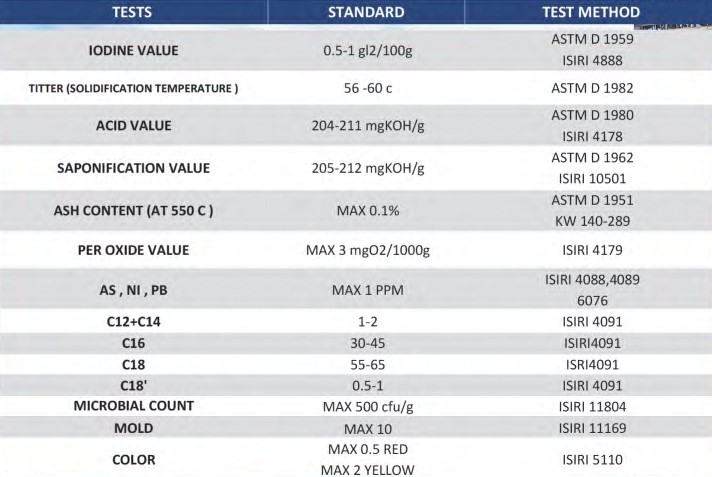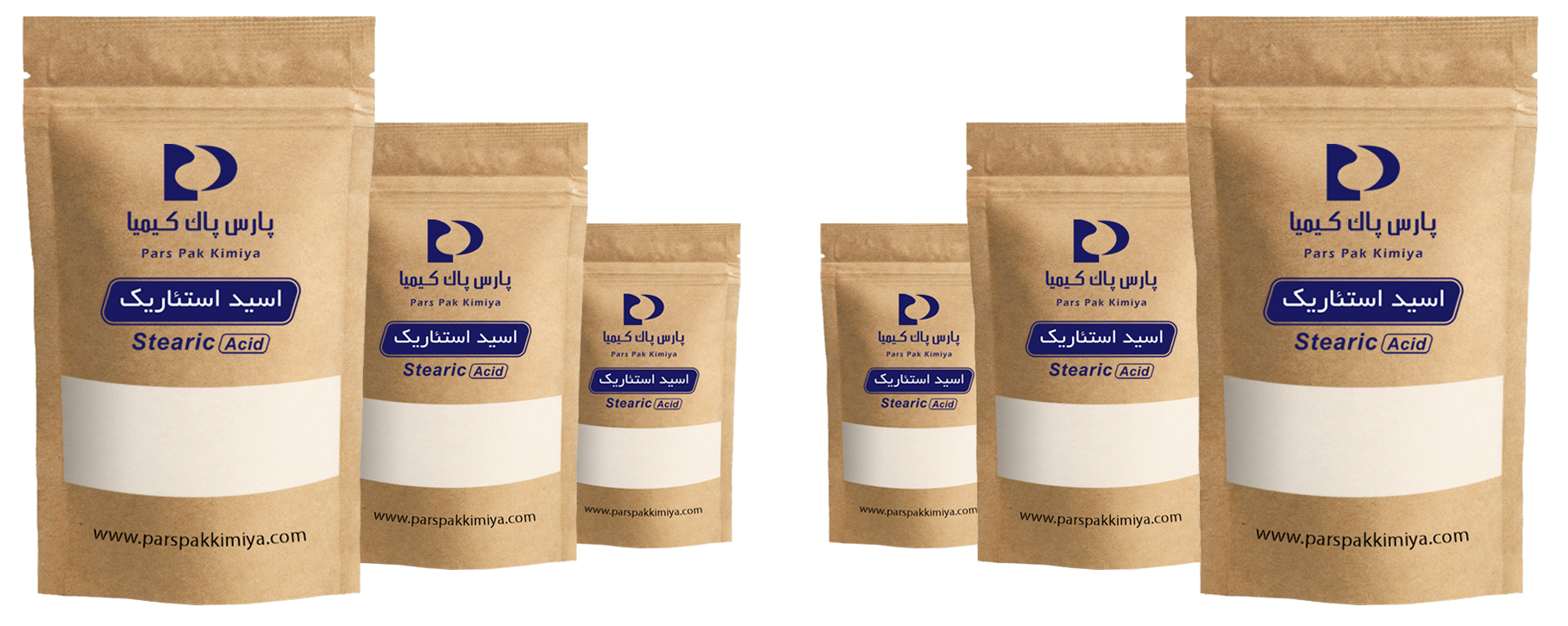اسید استئاریک از جمله اسیدهای چرب اشباع و غیر سمی بوده که دارای زنجیر طولانی با تعداد کربن 18 می باشد . که دارای فرمول شیمیایی C18H36O2 و نام آیوپاک، اکتادکانوئیک اسید می باشد. اسید استئاریک رو با نام های اسید استئاروفانیک و یا استیل استیک اسید هم میشناسند. وزن مولکولی آن معادل 284.48 گرم بر مول است و ترکیبی غیر سمی با شکل ظاهری به صورت پودر سفید رنگ است. نقطه ذوب آن 70 درجه و نقطه جوش آن 232 درجه سانتی گراد است. ساختار اسید استئاریک به صورت شاخه ای است که یک سر آن گروه متیل و سر دیگر آن گروه کربوکسیل وجود دارد. در الکل، اتر و کلروفرم محلول است اما در آب نامحلول می باشد. این ماده عمدتا از چربی ها و روغن استخراج شده و حاوی تری گلیسیریدی است که مولکول های گلیسیرین به زنجیره های هیدروکربنی طولانی متصل هستند. یکی از اصلی ترین چربی های مورد استفاده در تولید اسید استئاریک، چربی گوشت گاو است که به عنوان تالو شناخته می شود. کاربرد اسید استئاریک اسید استئاریک که ترکیبی پودری شکل و جامد است، عمدتا بعنوان عنصری در تولید و ساخت پلاستیک، شمع، پاستیل های روغنی، مکمل های غذایی، مواد آرایشی و نیز جهت نرم کردن لاستیک مورد استفاده قرار می گیرد. علاوه بر این، اسید استئاریک برای سخت کردن صابونهایی که با روغن نباتی تولید می شوند، کاربرد دارد.


